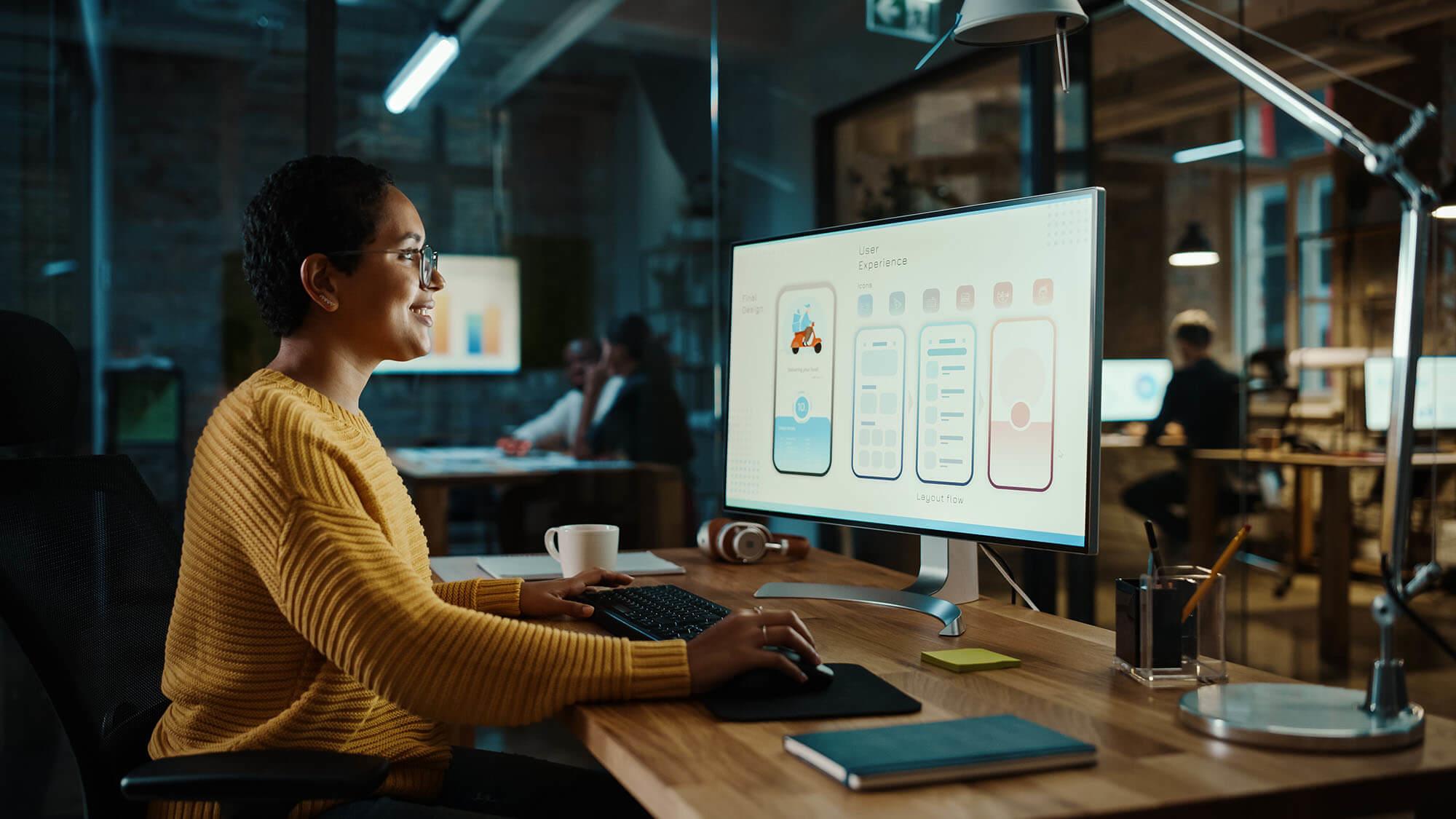SEO Marketing Las Vegas Specialized in Helping Your Business Thrive Online
SEO Marketing Las Vegas Specialized in Helping Your Business Thrive Online
Blog Article
Imaginative Website Design Solutions for Modern and Engaging Websites
In the realm of web style, the search of modern and interesting options has ended up being progressively crucial for organizations aiming to record customer interest. By incorporating bold color plans, interactive elements, and receptive formats, developers can produce experiences that not just resonate with customers yet additionally boost brand identity.
Accepting Strong Color Systems
In website design, the critical use of bold color design can significantly enhance individual interaction and brand name identification. By employing lively hues, developers can develop aesthetically striking internet sites that record attention and foster an unforgettable experience. An appropriate shade palette not only reflects a business's values yet also evokes particular feelings that can influence user habits.
Bold colors can be utilized to lead individuals' focus to key aspects such as contact us to action, boosting conversion rates. Using contrasting colors for switches and links can make these aspects stand out, triggering customers to engage more readily. In addition, a natural color design throughout the website enhances brand name acknowledgment, creating a feeling of knowledge and depend on among visitors.
Nevertheless, it is important to stabilize bold shades with sufficient white area to avoid frustrating customers. Efficient use typography additionally matches vibrant shades, ensuring readability while maintaining aesthetic charm. Eventually, embracing strong color design in website design not only raises visual top quality but additionally plays an essential role in attaining strategic service objectives, making it a crucial consideration for modern-day internet growth.

Utilizing Interactive Components
Interactive components are necessary in contemporary website design, as they considerably enhance customer involvement and produce a more dynamic browsing experience. By including attributes such as animations, float effects, and clickable components, websites can encourage individuals to discover web content more extensively and return for future gos to.

Micro-interactions, such as subtle animations when a switch is clicked or a form is sent, can also improve the individual experience by supplying immediate responses. These tiny details can make the website really feel even more responsive and alive, fostering a sense of connection between users and the website.
Furthermore, gamification elements, such as benefits for completing certain actions, can encourage users to involve with the web content a lot more deeply. By attentively integrating these interactive components, internet designers can create an unforgettable and appealing on the internet experience that resonates with users and urges them to return.
Implementing Responsive Layout
Executing responsive design is critical in today's multi-device landscape, guaranteeing that sites provide an optimal viewing experience across various display sizes. As users increasingly access the web via smart devices, tablet computers, and desktop computers, a one-size-fits-all strategy is no more feasible. Responsive layout permits seamless navigation and interaction, adapting design and web content to fit the tool being made use of.
Trick principles of receptive design include liquid grids, versatile photos, and media inquiries. Media inquiries promote the application of different designs based on the gadget's features, such you could check here as size, elevation, or resolution, enabling designers to customize the customer experience successfully.
Moreover, responsive layout improves SEO efficiency, as search engines favor mobile-friendly sites. By carrying out responsive style, businesses not just boost user satisfaction and interaction yet additionally boost their reach in an affordable digital landscape. As modern technology continues to advance, embracing responsive design has ended up being a fundamental method for any contemporary and engaging site.
Incorporating Multimedia Material
Multimedia material plays an important function in creating appealing and dynamic internet experiences that catch individuals' focus and improve understanding. By integrating message, images, sound, and video clip, web sites can offer a richer story that interest numerous discovering styles and preferences. This integration not just bolsters user involvement however additionally help in sharing complicated concepts succinctly.
Integrating high-quality see page pictures and infographics can damage up textual content, making it much more absorbable. In a similar way, video clip tutorials and discussions can supply in-depth insights that fixed content might not fully communicate. Audio elements, such as podcasts or background songs, can likewise improve the ambience of an internet site, developing an extra immersive experience.
In addition, the calculated usage of multimedia can enhance SEO efficiency, as online search engine prefer diverse content types, increasing exposure. Nonetheless, it more information is crucial to guarantee that multimedia components do not hinder web page tons times, as this can result in individual frustration. By balancing multimedia combination with efficiency factors to consider, internet designers can create aesthetically enticing and functional sites that reverberate with users, cultivating a much deeper link and motivating return brows through.
Focusing On Customer Experience

To accomplish an optimal customer experience, designers have to focus on several vital concepts. Clear calls to activity, readable typography, and arranged material overview users, minimizing cognitive lots.
Ultimately, prioritizing UX not only elevates customer complete satisfaction but also drives engagement and conversion rates, making it a vital element of modern internet layout strategies. By putting users at the center of style efforts, web sites can develop long lasting, positive perceptions that motivate return visits.
Verdict
In conclusion, modern website design remedies that stress strong color design, interactive components, receptive design, and multimedia content considerably enhance user involvement and complete satisfaction. Focusing on customer experience through clear layouts and constant comments further adds to enhanced conversion rates. By embracing these strategies, sites can efficiently astound site visitors and reinforce brand name identity, ultimately causing a more dynamic and interesting on the internet presence. The combination of these layout concepts is important for achieving modern website design goals.
Report this page